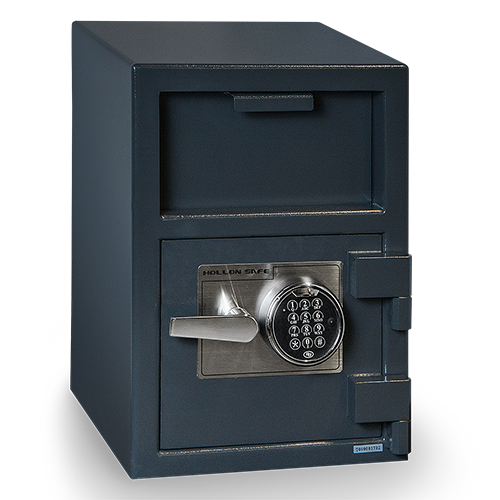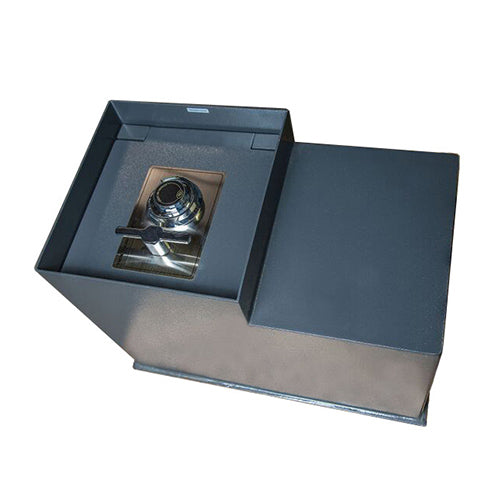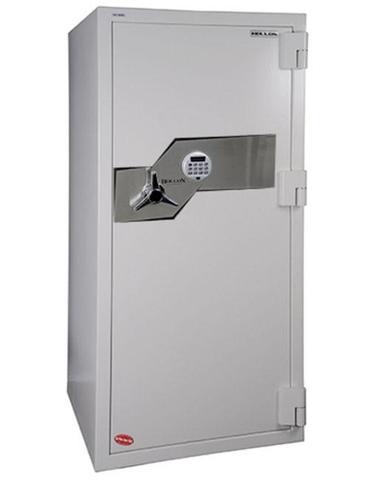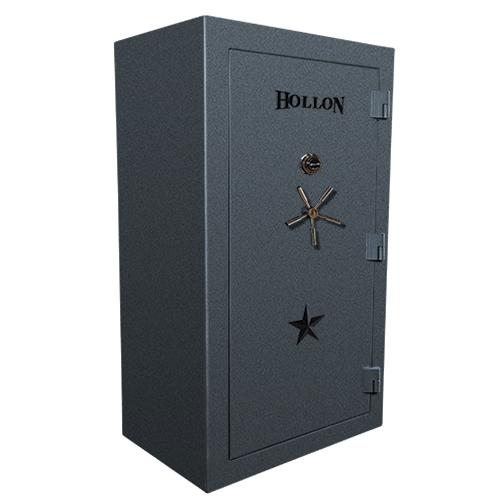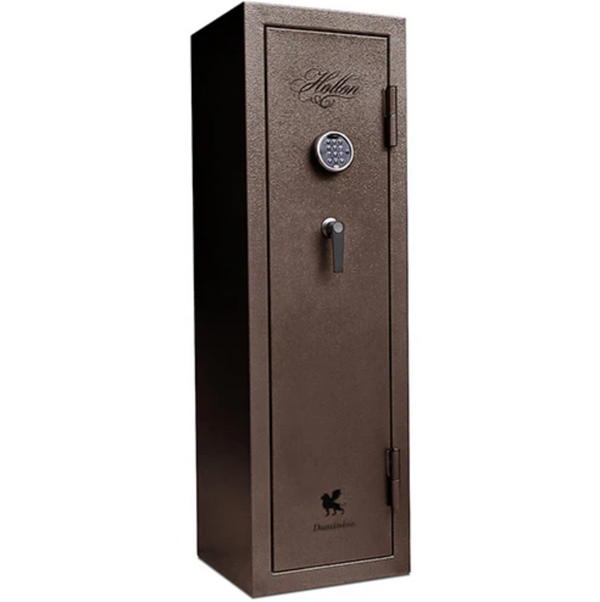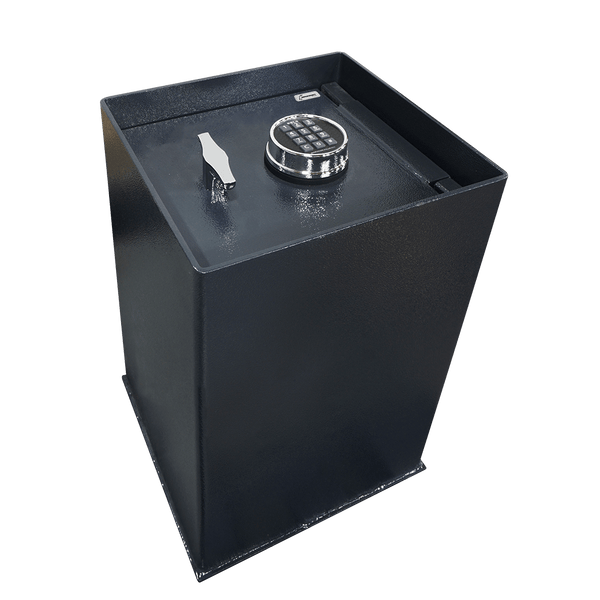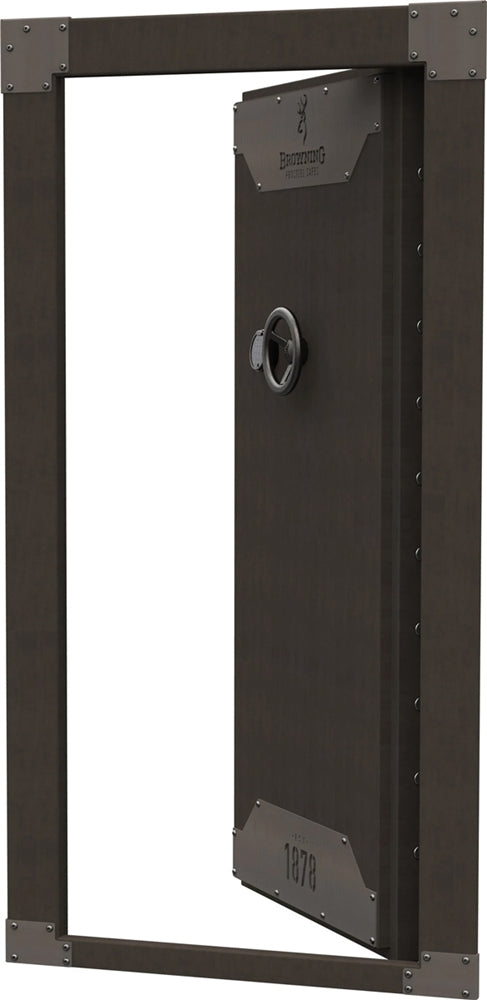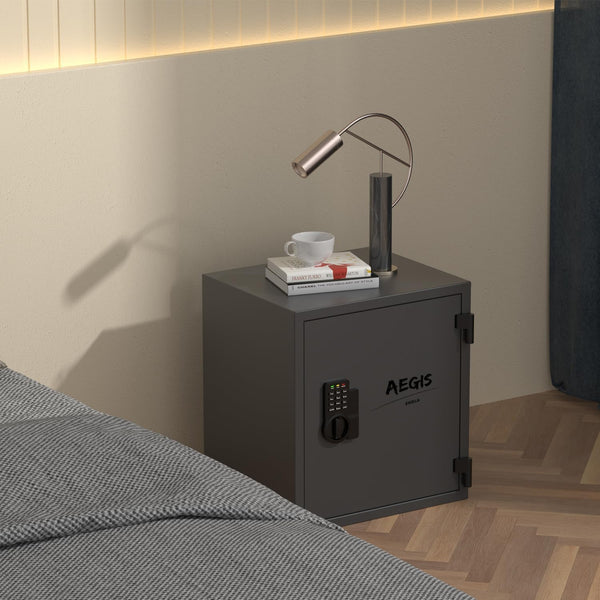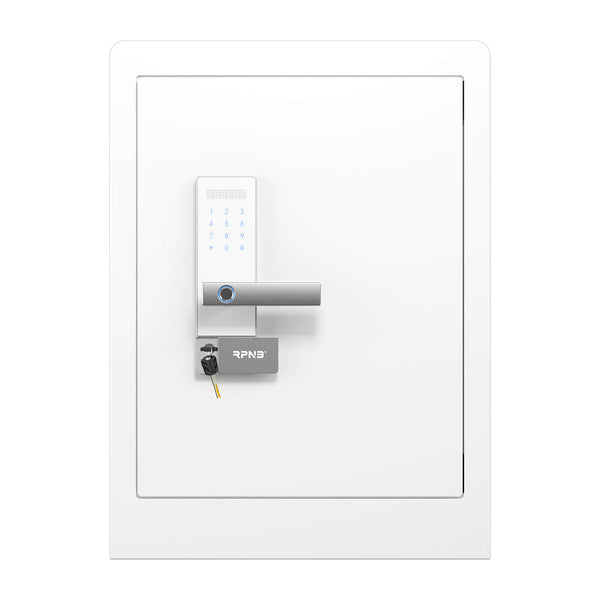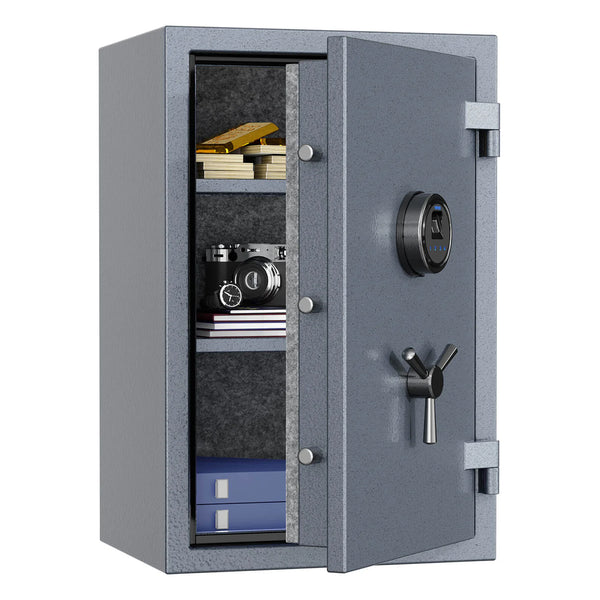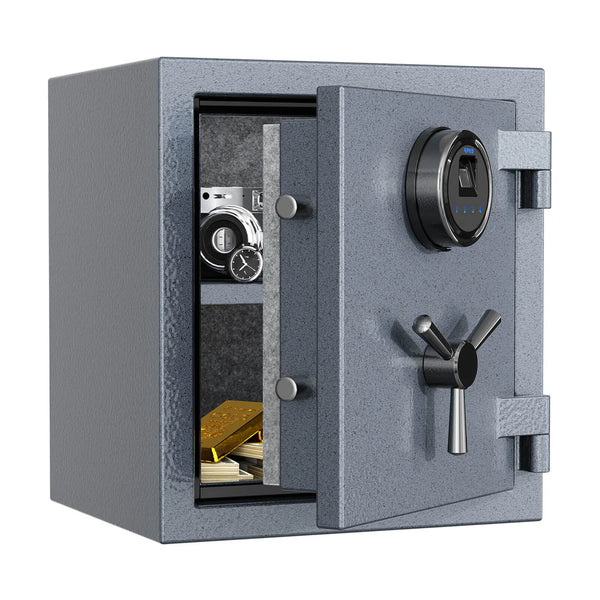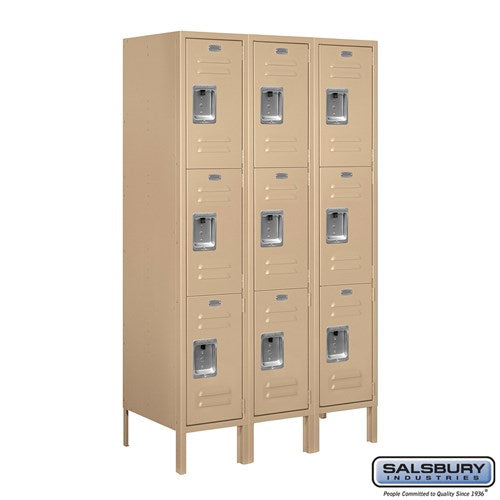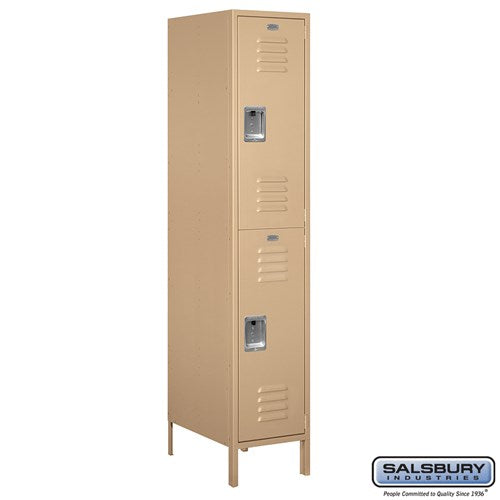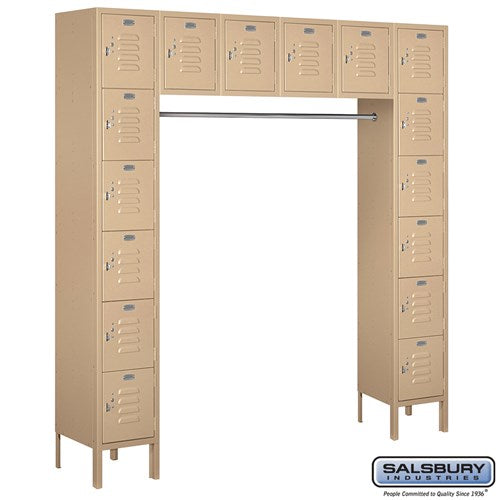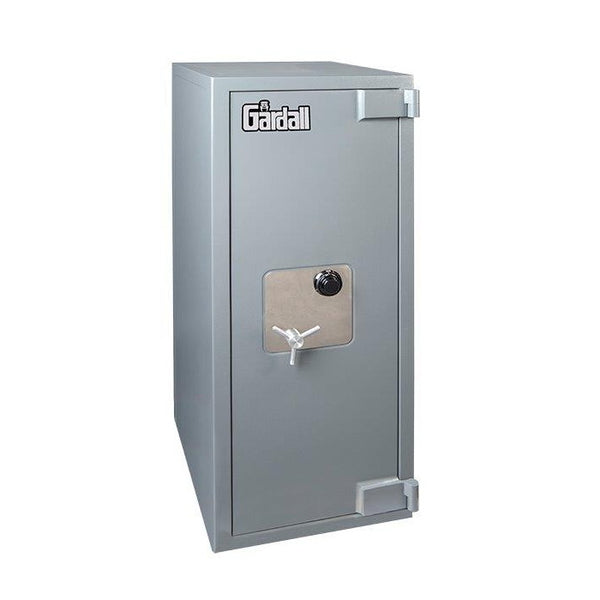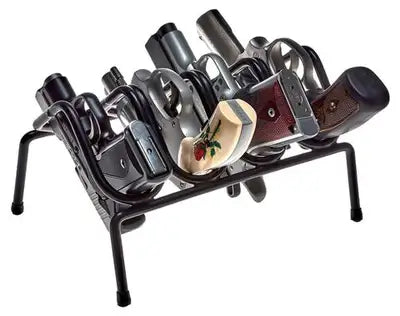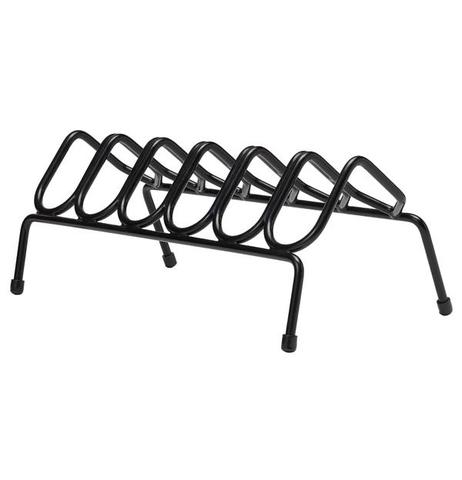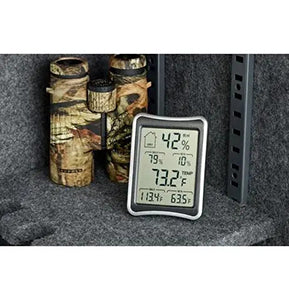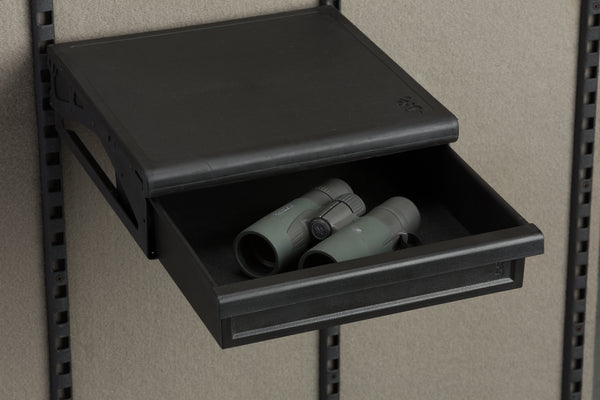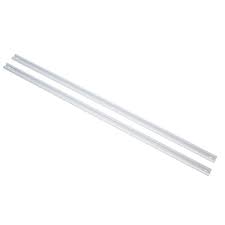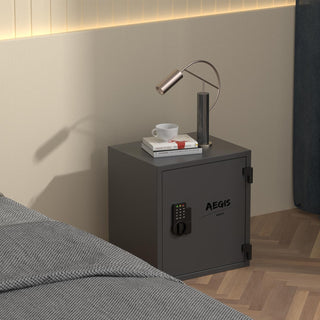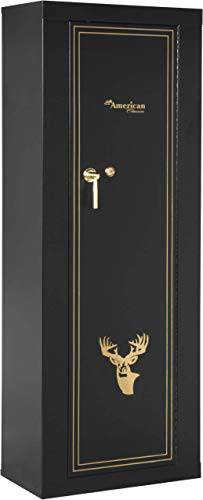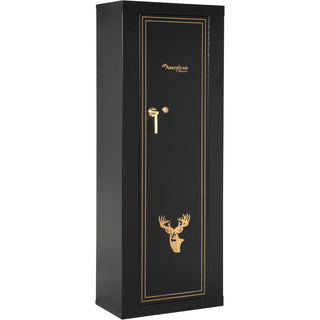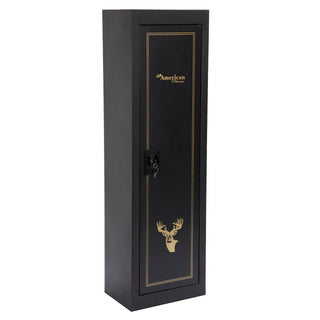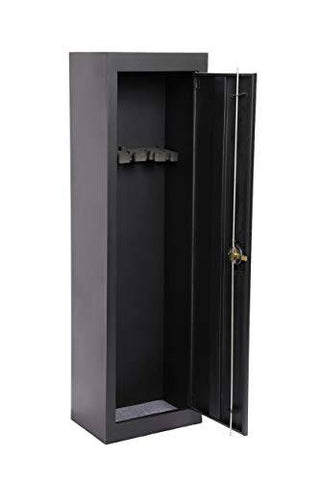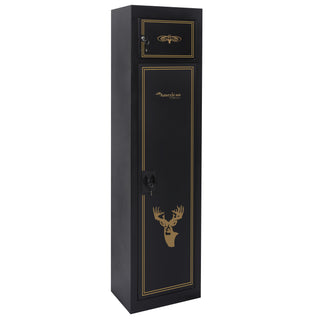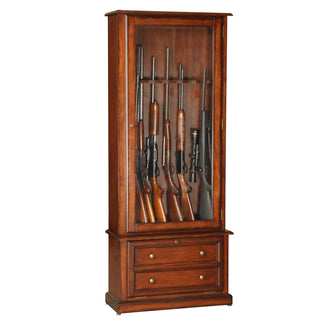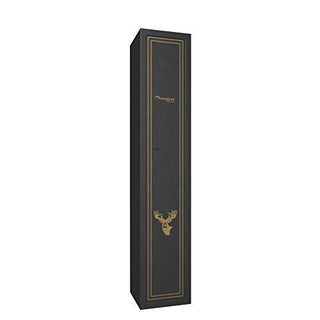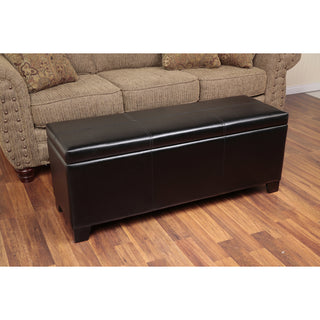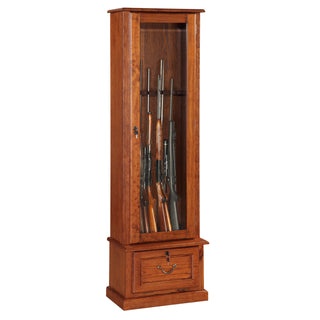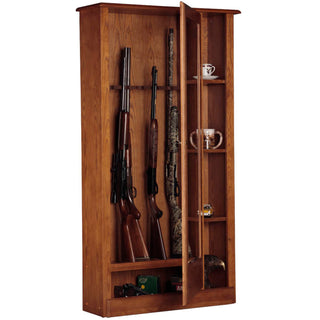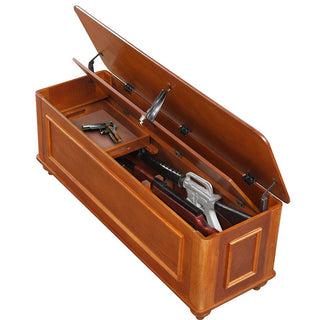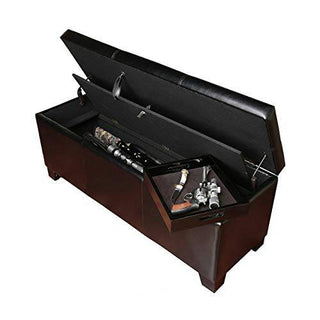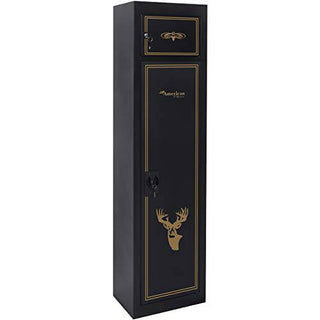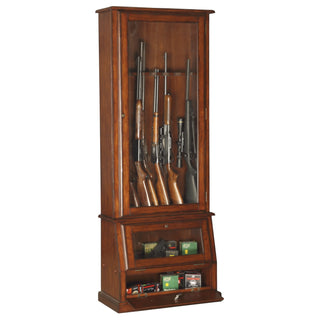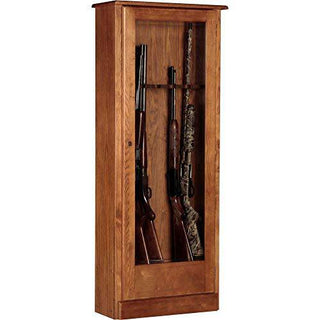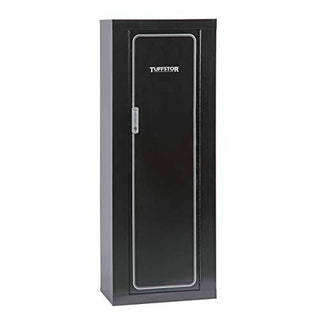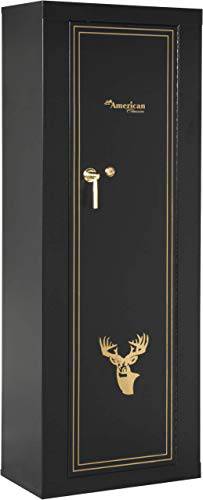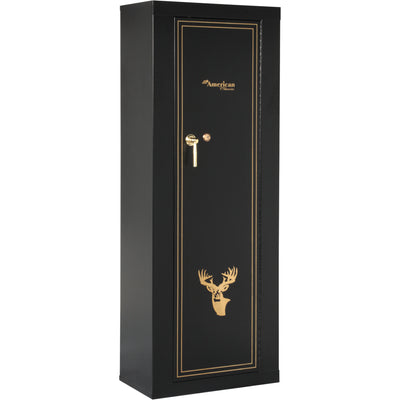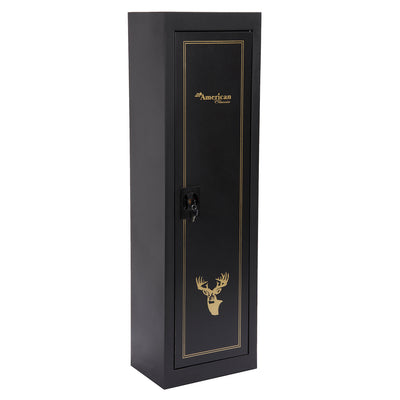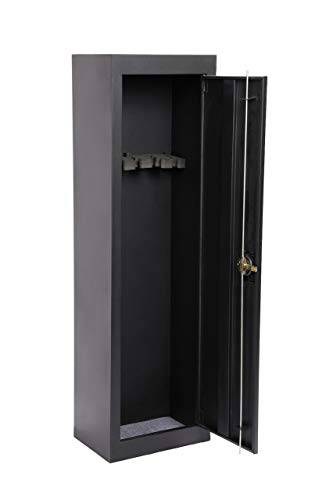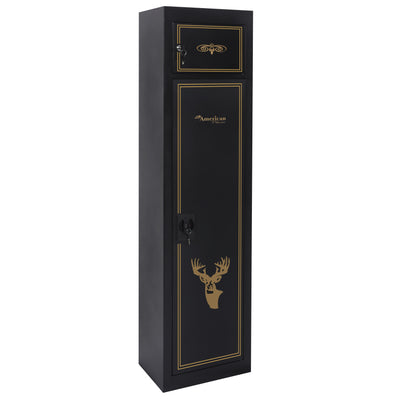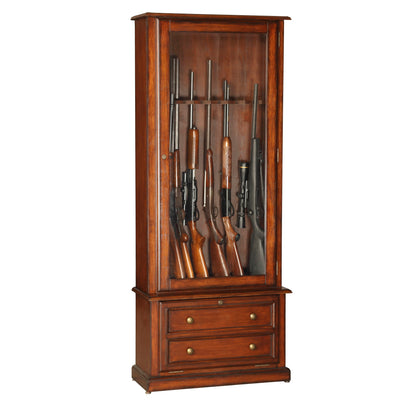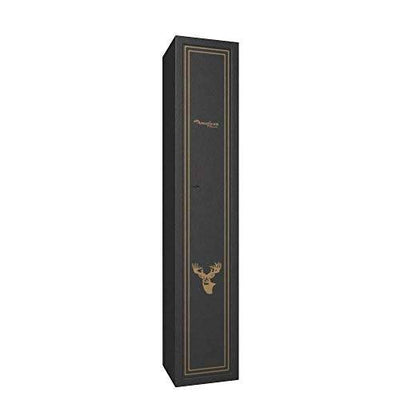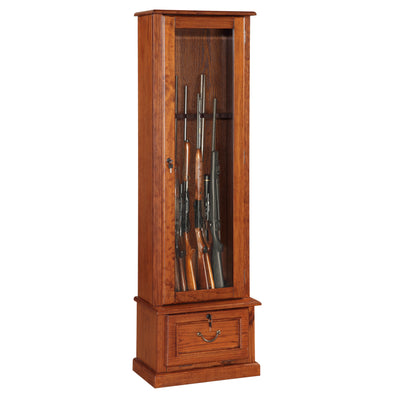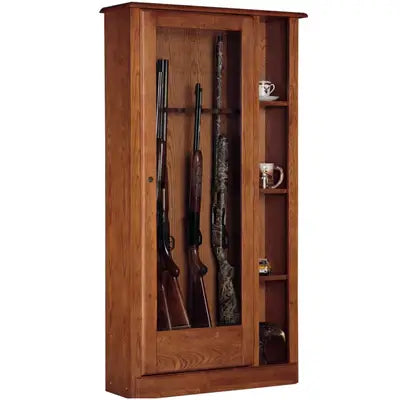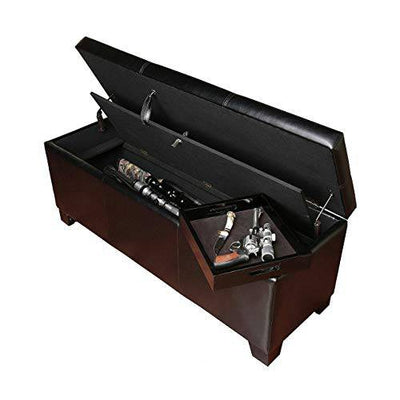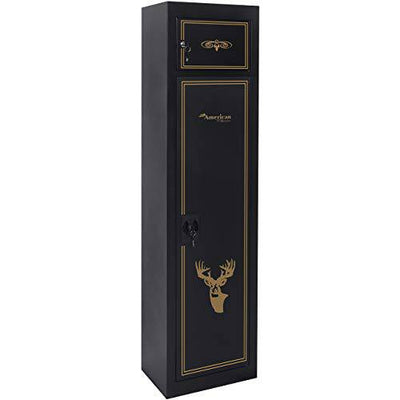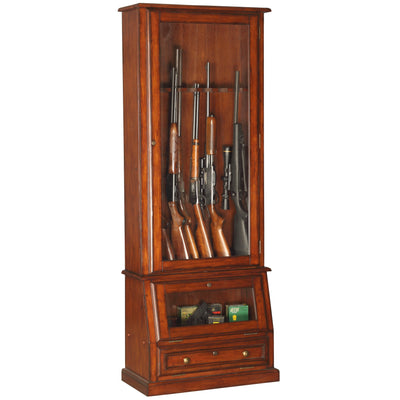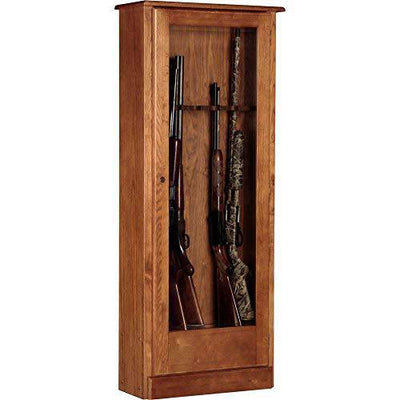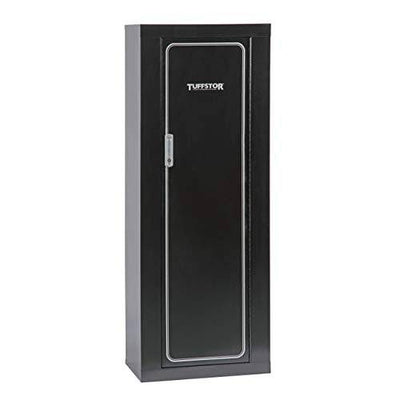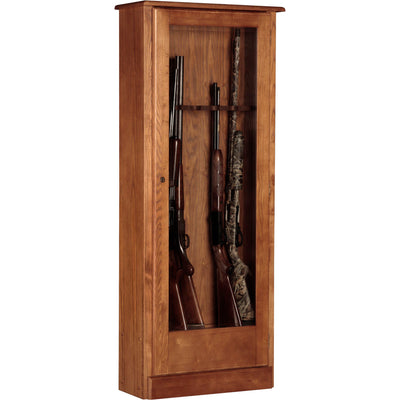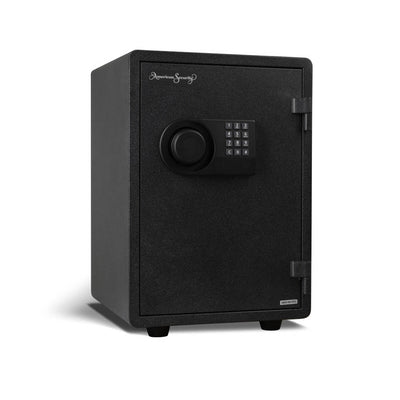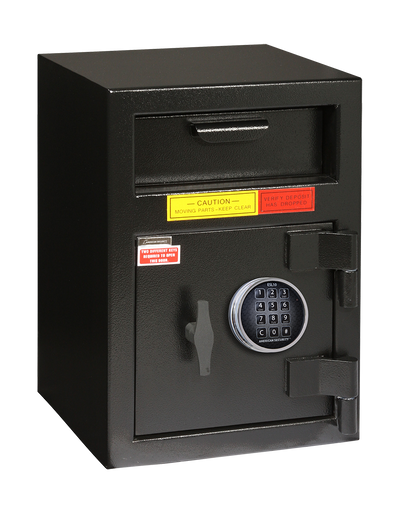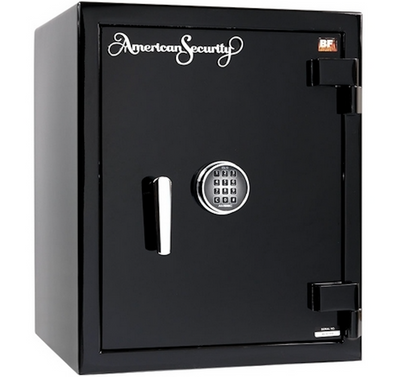Handgun Safety | A Basic Guide About What You Need to Know

*This post contains affiliate links to products. We may receive a commission for purchases made through these links, but it never influences our product selection process.
Table of Contents
Whether you’ve recently purchased a handgun or you’re thinking about bringing one into your home to protect yourself and your family, there are specific laws and safety aspects that you need to know.
But are you familiar with the unique laws in your State? And are you 100% certain that you know how to use a handgun in a way that isn’t going to cause harm to yourself or another person?
Handguns are dangerous, and they need to be treated with care. In this guide, you’ll find everything you need to know about handling a handgun safely and legally. We’ll also explain precisely why handgun safety is so important. This article will teach you how to practice safe shooting and everything you need to know regarding gun laws.

Different Types of Gun Permits
Let’s start by looking at the laws surrounding handguns. These vary from State to State, so it’s essential that you know the laws in the area you live in. It’s also important to know whether there is a difference in the laws between the State you live in and the one you might be traveling to.
The Difference Between Shall Issue, May Issue, and Unrestricted
Depending on where you live, a carry permit for a handgun will be described as “Shall Issue,” “May Issue,” or “Unrestricted”. But what is the difference between each of them? To clear up any confusion, we’ll take a closer look at these policies below.
“Shall Issue”
In States with a “Shall Issue” policy, the permit-granting authority (usually law enforcement or governing body) is compelled to provide a carry license to the applicant as long as they satisfy the legal requirements. These can include the following:
- Proof of residency within the State
- Proof of age
- Fingerprints for background checks
- No record of felony convictions or mental illness
- Proof of certification from a handgun safety class
“May Issue”
Obtaining a carry permit in States with a “May Issue” policy is a little more challenging. Even if you meet all of the legal requirements, you may still be denied a permit, as it is awarded at the discretion of local authorities. These local authorities “may” issue a permit if the citizen demonstrates a need to carry a handgun rather than simply wanting to.
The likelihood of being issued a carry permit can vary widely across the country and, in some cases, even within the same State. For example, in California, the issuance of a “may issue” permit varies so widely that it’s almost impossible to obtain a permit in areas such as San Francisco, while it’s much easier to obtain one in rural counties.
Maryland is another example where “may issue” permits are rarely issued to anybody without a law enforcement or political connection.
“Unrestricted”
States with “Unrestricted” policies allow you to carry a concealed handgun without needing a license or permit. This is also known as “Constitutional Carry”.
There are two subcategories of “Unrestricted” States. Some are “Fully Unrestricted”, which means no permit or license is required for concealed carry, while others are “Partially Unrestricted”.
This means that certain forms of concealed carry may be legal without a permit, while others may require a permit. This usually only refers to assault rifles; for the most part, handguns can be concealed in “Unrestricted” States without a permit.
Gun Laws By State
Most legislation around gun laws is enacted at a State level and is independent of Federal firearm laws. This means there is a dramatic difference between States surrounding certain gun laws, including carry permits, open carry, and sales.
Below, you’ll find details for each State that will show you the laws surrounding the purchase and ownership of handguns. You must familiarize yourself with these to safely own and use a handgun. If not, you could face prosecution.
|
State |
Concealed Carry Permit Required |
Purchase Permit Required |
Registration of Firearm |
Open Carry Allowed |
Background Checks on Private Gun Sales |
Magazine Size Restriction |
|---|---|---|---|---|---|---|
|
Alabama |
Yes - “Shall Issue” Policy” |
No |
No |
Yes - The firearm must be in a holster |
No |
- |
|
Alaska |
No - “Unrestricted” Policy |
No |
No |
Yes - No permit required |
No |
- |
|
Arizona |
No |
No |
No |
No |
No |
No |
|
Arkansas |
No - “Unrestricted” policy outside of your county of residence |
No |
No |
Yes - No license required |
No |
No |
|
California |
Yes - “May Issue” Policy |
Yes |
Yes |
Yes - Only in some rural counties |
Yes - Sale must be through a licensed dealer |
Yes -Limited to 10 rounds |
|
Colorado |
Yes - “Shall Issue” Policy |
No |
No |
Yes - No Permit Required |
Yes - Sale must be through a licensed dealer & The Colorado Bureau Of Investigation must approve the transfer. |
Yes - Limited to 15 rounds |
|
Connecticut |
Yes - “Shall Issue” Policy |
Yes |
Yes - Sales & serial numbers are recorded |
Yes - Permit required |
Yes - Sale must be through a licensed dealer |
Yes - Limited to 10 rounds |
|
Delaware |
Yes - “May Issue” Policy |
No |
No |
Yes - No permit required |
Yes - Sale must be through a licensed dealer |
No |
|
District of Columbia |
Yes - “Shall Issue” Policy |
Yes |
Yes - Handguns must be registered with The Metropolitan Police |
No |
Yes - Sale must be through a licensed dealer |
Yes - Limited to 10 rounds |
|
Florida |
Yes - “Shall Issue” Policy |
No |
No - Florida laws ban the registration of firearms |
No - Except when hunting or fishing |
No |
No |
|
Georgia |
Yes - “Shall Issue” Policy |
No |
No |
Yes - License required |
No |
No |
|
Hawaii |
Yes - “May Issue” Policy |
Yes |
Yes |
Yes - No permit required |
Yes - Permit required to purchase |
Yes - Limited to 10 rounds |
|
Idaho |
No - “Unrestricted” Policy |
No |
No |
No - No permit is required |
No |
No |
|
Illinois |
Yes - “Shall Issue” Policy |
Yes - FOID Card required to purchase |
No |
No |
Yes - FOID card verification required |
No |
|
Indiana |
Yes - “Shall Issue” Policy |
No |
No |
Yes - Permit required |
No |
No |
|
Iowa |
Yes - “Shall Issue” Policy |
Yes - Can purchase using a carry permit |
No |
Yes - Permit required |
Yes - Permit required |
No |
|
Kansas |
No - “Unrestricted” Policy |
No |
No |
Yes - No permit required |
No |
No |
|
Kentucky |
Yes - “Shall Issue” Policy |
No |
No |
Yes - No permit required |
No |
No |
|
Louisiana |
No |
No |
|
Yes - No permit required |
No |
No |
|
Maine |
No - “Unrestricted” Policy |
No |
No |
No |
No |
No |
|
Michigan |
Yes - “Shall Issue” Policy |
No |
Yes - Handguns must be registered with the police |
Yes - Permit required |
Yes - Carry permit or handgun purchase license required |
No |
|
Mississippi |
No - “Unrestricted” Policy |
No |
No |
No |
No |
No |
|
Missouri |
No - “Unrestricted” Policy |
No |
No |
Yes |
No |
No |
|
Montana |
No - “Unrestricted” Policy |
No |
No |
Yes - Permit required |
No |
No |
|
Nebraska |
Yes - “Shall Issue” Policy |
Yes - Carry permit or handgun certificate required |
No |
Yes - Handgun must be visible in the vehicle |
Yes - Carry permit required to purchase |
No |
|
Nevada |
Yes - “Shall Issue” Policy |
No |
No |
Yes - Cannot be concealed without a permit |
Voluntary |
No |
|
New Hampshire |
No - “Unrestricted” Policy |
No |
No |
Yes - No permit required |
No |
No |
|
New Jersey |
Yes - “May Issue” Policy |
Yes - Purchaser ID card required |
Voluntary |
Yes - Permit required |
Yes - Permit required |
Yes - Limited to 10 rounds |
|
New Mexico |
Yes - “Shall Issue” Policy |
No |
No |
Yes - No permit required |
No |
No |
|
New York |
Yes - “May Issue” Policy |
Yes - Permits issued by County or State Supreme Court Judges |
Yes - It is illegal to possess a handgun that hasn’t been registered |
Yes - Permit required, and the handgun must be concealed |
Yes - It must be purchased through a licensed dealer |
Yes - Limited to 10 rounds |
|
North Carolina |
Yes - “Shall Issue” Policy |
Yes - Carry permit or purchase permit required |
No |
Yes |
Yes - Carry permit or purchase permit required |
No |
|
North Dakota |
Yes - “Shall Issue” Policy |
Yes - Carry permit or purchase permit required |
No |
Yes |
Yes - Carry permit or purchase permit required |
No |
|
Ohio |
Yes - “Shall Issue” Policy |
No |
No |
Yes - No permit required |
No |
No |
|
Oklahoma |
Yes - “Shall Issue” Policy |
No |
No |
Yes - Permit required |
No |
No |
|
Oregon |
Yes - “Shall Issue” Policy |
No |
No |
Yes |
Yes - It must be purchased through a licensed dealer |
No |
|
Pennsylvania |
Yes - “Shall Issue” Policy |
No |
No |
Yes - Except in Philadelphia or inside a vehicle |
Yes - Must be purchased through a licensed dealer or the County Sheriff’s Office. |
No |
|
Rhode Island |
Yes - “Shall Issue” and “May Issue” Policy |
Yes - You must have a “Blue Card” to purchase, obtained by taking a safety exam. |
No |
Yes - Permit required |
Yes |
No |
|
South Carolina |
Yes - “Shall Issue” Policy |
No |
No |
No |
No |
No |
|
South Dakota |
Yes - “Shall Issue” Policy |
No |
No |
Yes - the handgun must be visible in a vehicle |
No |
No |
|
Tennessee |
Yes - “Shall Issue” Policy |
No |
No |
Yes - Permit Required |
No |
No |
|
Texas |
Yes - “Shall Issue” Policy |
No |
No |
Yes |
No |
No |
|
Utah |
Yes - “Shall Issue” Policy |
No |
No |
Yes - Permit only required if the handgun is two actions from being fired or if ammunition is in the chamber. |
No |
No |
|
Vermont |
No |
No |
No |
Yes |
Yes - Unless the sale is to a family member, the handgun must be done through a licensed dealer. |
Yes - Limited to 15 rounds |
|
Virginia |
Yes - “Shall Issue” Policy |
No |
No |
Yes |
No |
No |
|
Washington |
Yes - “Shall Issue” Policy |
No |
Yes - Dealers must report all handgun sales to the police |
Yes - No permit required unless the handgun is loaded and stored in a vehicle |
Yes - It must be purchased from a licensed dealer |
No |
|
West Virginia |
No - “Unrestricted” Policy |
No |
No |
Yes |
No |
No |
|
Wisconsin |
Yes - “Shall Issue” Policy |
No |
No |
Yes |
No |
No |
|
Wyoming |
No |
No |
No |
Yes - No permit required |
No |
No |
States with Additional Laws
|
State |
Concealed Carry Permit Required |
Purchase Permit Required |
Registration of Firearm |
Open Carry Allowed |
Background Checks on Private Gun Sales |
Magazine Size Restriction |
State Preemption of Local Restrictions |
Assault Weapons Banned |
Owner License Required |
Others |
|---|---|---|---|---|---|---|---|---|---|---|
|
Maryland |
Yes - “May Issue Policy” |
Yes - Handgun qualification license required |
Yes - All firearms must be registered with the police |
Yes - Permit required |
Yes - Must be purchased through a licensed dealer |
Yes - Limited to 10 rounds |
Yes - Most local laws are preempted by State laws |
Yes - Certain models of handgun are banned |
- |
- |
|
Massachusetts |
Yes - “May Issue” Policy |
Yes - Carry permit or FID required |
No |
Yes - Permit required |
Yes - Seller must verify the purchaser’s FID card |
Yes - Limited to 10 rounds |
- |
- |
Yes - FID license required |
Red Flag Law: Yes - Handguns can be temporarily confiscated |
|
Minnesota |
Yes - “Shall Issue” Policy |
Yes - State residents can use a carry permit to purchase |
No |
Yes - Permit required |
No |
No |
Yes - Discharge of firearms may be regulated by local municipalities |
No - Assault weapons may be purchased with a carry permit |
No |
Peaceable Journey Law: Yes - Handgun must be unloaded, in a case, and legally owned |
FID, FOID & Magazine Size Restrictions
You may have noticed that some States require either an FID or FOID card to acquire certain permits. But what do these acronyms mean?
- FID: “Firearms Identification Card”. In some States, possessing one of these is required in order to purchase, possess, and transport handguns and ammunition.
- FOID: “Firearm Owners Identification”. As with an FID card, some States may require an FOID to purchase, possess, and transport handguns and ammunition.
Magazine Size Restriction
You’ll also notice from the list of States and their individual gun laws detailed above, that some have magazine size restrictions. The reasoning behind this is simple; if a handgun is limited to a certain number of bullets and rounds of repeated fire, it reduces the likelihood of mass shootings.
As a responsible gun owner, you’re unlikely to need more than 15 rounds of ammunition in your handgun at any given time. Limiting your ammunition is also a great way of making sure you’re using a handgun safely.

General Handgun Safety Rules
Now you’re more familiar with the gun laws in your State, it’s important to look at how to safely store and use your handgun. No matter how you look at it, a handgun is a deadly weapon that needs to be treated with care and respect.
Below, we’ll take a look at some general handgun safety rules. Following these will make sure that both yourself and everyone around you is kept safe when you’re carrying and using your handgun.
4 Primary Handgun Safety Rules:
-
Keep it pointed in a safe direction at all times: Unless you’re taking aim at your target, you need to make sure that you’re pointing your handgun towards the floor. This ensures that there’s no risk of it accidentally firing in the direction of another person.
-
Treat every firearm with the respect due to a loaded gun: We’re all human and we all make mistakes. So, even if you’re certain there’s no ammunition in the handgun’s chamber, there’s a chance that there could still be. This is why it’s essential that you treat your handgun as if it’s always loaded.
-
Be sure of the target, what is in front of it, and what is beyond it: Whether you’re in a firing range or you’re out hunting, you need to know the identifying features of what it is you’re shooting at. You also need to make sure you have an adequate backstop. You should never aim to shoot through something, as the bullet could continue beyond the intended target and hit something, or somebody, else.
-
Keep your finger outside the trigger guard until you’re ready to shoot: This is essential for preventing accidental discharge. Follow the three rules above and, when you’re locked onto your target, you can then move your finger inside the trigger guard to fire the handgun.
Check Your Barrel & Ammunition

Maintenance is an important part of handgun safety, and if there is anything obstructing the barrel of your handgun it can bulge. This can lead to it bursting when you pull the trigger, causing potentially fatal injuries to yourself and anybody around you.
An obstruction could be dust, dirt, or even a build-up of lubricating oil or grease in the bore. So, before you even think about pulling the trigger, take a few minutes to check for obstructions by following these steps:
- Hold your handgun with the muzzle pointed in a safe direction.
- Open the action and make sure that both the chamber and the magazine are unloaded.
- Inspect the barrel for any debris. You may need to use a barrel light to get a better view.
- If there are any obstructions, remove them using a cleaning rod.
- Once you’ve done that, check the barrel again to make sure you’ve removed the obstruction entirely. If not, clean it again until it’s been completely removed.
You also need to be certain that the ammunition you are using is of the exact caliber for which your handgun was designed. You can be sure of this by purchasing your ammunition from a reliable source and checking the manufacturer's instructions.
Unload Firearms When Not In Use

It’s extremely important that you make sure your handgun isn’t loaded when it’s not in use. Even if you’ve just finished a round of shooting at a firing range, you need to unload your ammunition as soon as you’re done.
This is the best way for making sure that your handgun isn’t able to accidentally discharge when you’re carrying it. It’s also essential if you’re keeping your handgun in your home.
Given that the majority of injuries and deaths related to shooting happen in the home, it’s always best to keep your gun unloaded if it’s not being used.
You should always keep your gun stored in a safe when it’s not in use as well. This will dramatically reduce the chances of it falling into the wrong hands. And, by ensuring that it’s unloaded when stored in the safe, you’re reducing the risk of accidental injury even further.
Point A Handgun Only At Something You Intend To Shoot

You should never point your handgun at anything you don’t intend to shoot. No matter how certain you are you’ve got the safety on, there’s a risk that your gun could fire and, if you’re pointing it at another person, you could cause them serious harm.
Remember, also, that a gun is a weapon and it needs to be treated with care and respect. With this in mind, you should avoid all horseplay when you’re handling a gun.
Wantonly waving your handgun around or even pretending to aim it at another person is something that you should never do.
It’s particularly important to make sure that you’re not pointing your gun at an unintended target when you’re loading and unloading your handgun too, as it could still accidentally discharge.
Instead, keep it pointed at a 45-degree angle directly aimed at the ground. By doing this, if the handgun does accidentally discharge, the ground will stop the bullet and you don’t risk shooting at your own feet.
Be Careful When You Load The Gun

Keeping your handgun pointed away from you and everyone else is a fairly obvious step when you’re loading your ammunition. But there are some other essential safety steps you need to take when you’re loading and reloading your handgun.
-
Wear safety glasses: Doing this will protect your eyes from an accidental primer explosion when you’re reloading.
-
Avoid all distractions: You should only load and reload your handgun when you can focus your full attention on the task. And, again, make sure that you’re not pointing the gun at yourself or anybody else.
-
Follow the manufacturer’s loading instructions: While most handguns follow the same basic loading process, some models may have certain steps that need to be followed. So, make sure you’re following the manufacturer’s instructions when you’re loading and reloading.
Don't Run, Jump, Or Climb With A Loaded Handgun
If you’re using a handgun during a hunting trip, there’s a chance that you’re going to need to run, jump, or climb across the terrain in pursuit of your target.
However, it’s important to make sure that your handgun is unloaded before you do any of these things.
Relying on the handgun’s safety is not enough in these circumstances.
The chances of accidental discharge are more likely when you're running, jumping, and climbing, as you’re at greater risk of dropping your gun or freeing it from its holster.
Store Handguns And Ammunition Separately & Safely
To prevent unauthorized use and to generally make sure that you’re being as responsible as possible when you’re storing a gun, you need to make sure that the handgun and its ammunition are stored separately and safely.
The best way of doing this is to use a gun safe for storing the handgun, and a separate ammo safe for storing your ammunition. Biometric safes are one of the best options for keeping a handgun safely locked away, as these will be much more difficult for anybody with unauthorized access to break into.
It’s also a good idea to keep these two safes in separate rooms and, for an extra layer of safety, lock each of them away inside a lockbox before you place them in their respective safes.
Do Not Drink Alcoholic Beverages Before & During Shooting
This really goes without saying, but you should never shoot a handgun when you’re under the influence of alcohol. When we drink, our vision can become distorted and our judgment becomes impaired. This means that firing a handgun when you’re inebriated can result in a fatal accident. Alcohol also gives us a false sense of confidence, which can lead to risky behaviors.
With this in mind, it’s extremely important that you don’t drink before using your handgun or while you’re shooting.
Since alcohol is a drug, it takes a while to leave our system too, and our bodies take around two hours to process and eliminate the alcohol contained in a standard drink.
So you should never use a handgun after you’ve been drinking either as you will still have impaired vision and judgment. Wait until all the alcohol you’ve consumed has completely left your system.
Be Aware Of Your Surroundings
We know that a handgun needs to be pointed away from other people and unintended targets, and the best way to make sure that you do this is to be aware of your surroundings.
Before you start shooting, take a few moments to evaluate your environment.
Make sure the area is well-lit and that you’re able to see your intended target clearly, and take a good look around and make sure that everything seems safe.
You should also clearly identify any areas that another person could enter from, and avoid shooting in those directions.
Most importantly, you need to be aware of the people around you and, if there are, pay extra attention to your shooting practices.
Again, make sure that you’re only pointing at the intended target and keep your handgun pointed away from anybody else at all times.
Why Handgun Safety Is So Important
As we’ve said before, a handgun is a weapon that needs to be treated with care and respect. Owning, carrying, and using a handgun isn’t something that should be taken lightly and it’s your personal responsibility to make all aspects of your handgun are kept as safe as possible at all times.
Below, we’ll look at some of the biggest reasons why handgun safety is so important.
It Will Protect You And Other People

A handgun is designed to protect you and other people around you. You should never own a handgun with the intention of harming another person. Instead, your focus should be on deterring and preventing any harm from coming to your family.
However, with so many gun accidents happening inside the home, the first line of defense lies with you and how responsibly you’re looking after your handgun.
Keeping your handgun stored in a safe, keeping your ammunition locked away separately from the gun, and never giving anybody else access to either of them is the best way to protect yourself and those around you.
Likewise, following the safety rules of keeping your gun pointed away from other people when it’s in use will keep other people around you safe. As will never drinking alcoholic drinks before, during, or after use.
Most First Time Gun Owners Go For A Handgun, Which Means A Lot Of Beginners
There’s quite a lot to learn when it comes to learning how to safely store and use a handgun. Most first-time gun owners choose a handgun and this means that there are a lot of people at a “beginner” level.
The more “beginners” there are, the greater risk there is of causing unwanted harm, especially if they aren’t familiar with gun laws or safety practices. However, by following the advice we’ve outlined above, a new gun owner can soon move away from “beginner” status and quickly learn how to use their firearm responsibly.
Statistics Show That Handguns Are Largely Bought By Women

Handguns are more often purchased by women than men, and the main reason for this is because they are easier to handle and quicker to access when needed.
And, when it comes to protecting children and other family members from harm, a quick-access firearm is exactly what you need.
However, learning how to store and use a handgun safely is the first step in protecting other family members from harm.
Keeping it stored away in a safe, particularly a biometric safe, stops the handgun from falling into an inquisitive child’s hands.
It’s The Law To Practice Safe Gun Handling & Shooting
While the intricacies of gun laws vary from State to State, they all have one thing in common - it’s illegal to use a handgun in a way that is unsafe or that could cause potential danger to another person.
This is another reason why it’s so important to learn how to use and store a handgun safely.
If you don’t, you could find yourself facing prosecution and, even worse, causing potentially fatal harm to yourself or another person.
How To Safely Transport Handguns
While it’s always best to keep your handgun safely stored away until your next practice session or the time comes to use it, there may be a situation where you need to travel with your handgun.
There are certain things you need to know before you leave your home in possession of a handgun. We’ll talk you through these below to help make sure that you aren’t breaking any laws, and that your handgun is safe when you’re traveling.
In Some US States, You May Need A Permit To Transport A Gun

As each State operates with its own gun laws, there is a chance that you’ll need a permit to carry a gun with you when you’re away from home. These are known as ‘concealed carry’ and ‘open carry’ permits.
But what’s the difference between them? Well, it’s actually fairly simple.
The term “concealed carry” refers to a person concealing a handgun on their person. This could be in a backpack or a purse.
You might also be carrying your handgun inside your waistband, in an ankle holster, or carrying it in your pocket.
Put simply, it means that you’ve got a handgun with you, it’s just being kept out of sight.
Conversely, “open carry” means that you’re openly carrying a handgun in public without concealing it.
This doesn’t mean walking down the street with it in your hand though, and it would usually be in a holster placed on your hip.
Always Unload The Firearm & Case It

You should always make sure that your handgun is unloaded and stored in a case when you’re traveling, too.
While a concealed carry permit will allow you to store it in a holster worn on your body, it’s always much safer to keep it locked away in a case that’s stored in a backpack or purse.
This reduces the risk of it falling into the wrong hands if you were to accidentally lose the handgun. Making sure it isn’t loaded is also essential when you’re transporting a handgun.
This doesn’t only remove the risk of causing harm to yourself and other people if it were to accidentally discharge, but also means that you’re not risking handing a loaded gun to another person if you were to misplace it.
In some circumstances, you may also need to break the gun down when you’re transporting it.
Even if this isn’t a State requirement, it’s often the safest way to transport a handgun as it’s virtually impossible for it to discharge, even if you’ve accidentally left ammunition in the chamber.
If You Are Transporting The Gun Via Vehicle

If you’re traveling a greater distance and you’re transporting your handgun in a vehicle, there are even more safety rules you need to follow.
First of all, your handgun should be stored in a lockbox, which should be placed in the trunk of your car.
If the trunk isn’t a suitable option, the lockbox containing the gun should be placed in an area of the vehicle that is not easily accessible to anybody else while you're driving or when you’re not in the vehicle.
You might think that the obvious choice here would be the glove compartment.
However, certain States prohibit storing a handgun in the glove compartment for any reason.
In fact, the glove compartment and the console are specifically mentioned in Federal Law 962a.
To put it n the simplest terms possible, this law states that you can transport a handgun from anywhere you’re legally allowed to have it, to anywhere you’re legally allowed to have it as long as you follow these conditions:
- You are not currently prohibited from transporting, shipping, or receiving a firearm.
- You are only transporting a firearm. “Transporting” is the important word here. For example, if you’re traveling to Los Angeles with a handgun in your vehicle, and you stay there for a week, you’re not “transporting” the firearm through L.A.
- You are transporting the firearm for a “Lawful Purpose”. This essentially means that you’re not traveling to another State to commit a crime using the handgun.
- When you’re transporting a firearm it must:
- Remain unloaded at all times.
- Not be directly or readily accessible from the passenger compartment.
- In the case that your vehicle does not have a compartment separate from the driver’s compartment, the handgun should be contained in a locked container and stored somewhere other than the glove compartment or console.
Of course, each State has its own gun laws and these are often independent of Federal gun laws. But, even if your State allows you to store a handgun in your car’s glove compartment, it’s not the safest place to keep it. This is because it’s the first place that a thief will look if your car gets broken into. And, as we know, a handgun in the wrong hands is an extremely dangerous thing.
Summary
In conclusion, understanding and practicing handgun safety is of paramount importance to every firearm owner. This guide has provided an overview of the diverse types of gun permits, detailed state laws, and additional rules including Firearm Identification (FID), Firearm Owners Identification (FOID), and magazine size restrictions.
Handgun safety cannot be stressed enough and practicing responsible firearm transportation is an integral part of this. Remember, owning a handgun is not just about exercising your rights, but also about acknowledging and taking responsibility for the risks. As such, it's essential to equip ourselves with the necessary knowledge to ensure safe and lawful firearm handling.
For your additional security needs, don't forget to check out USASafeandVault.com. We offer a wide array of robust, reliable storage solutions for your firearms, further ensuring your peace of mind and safety.









